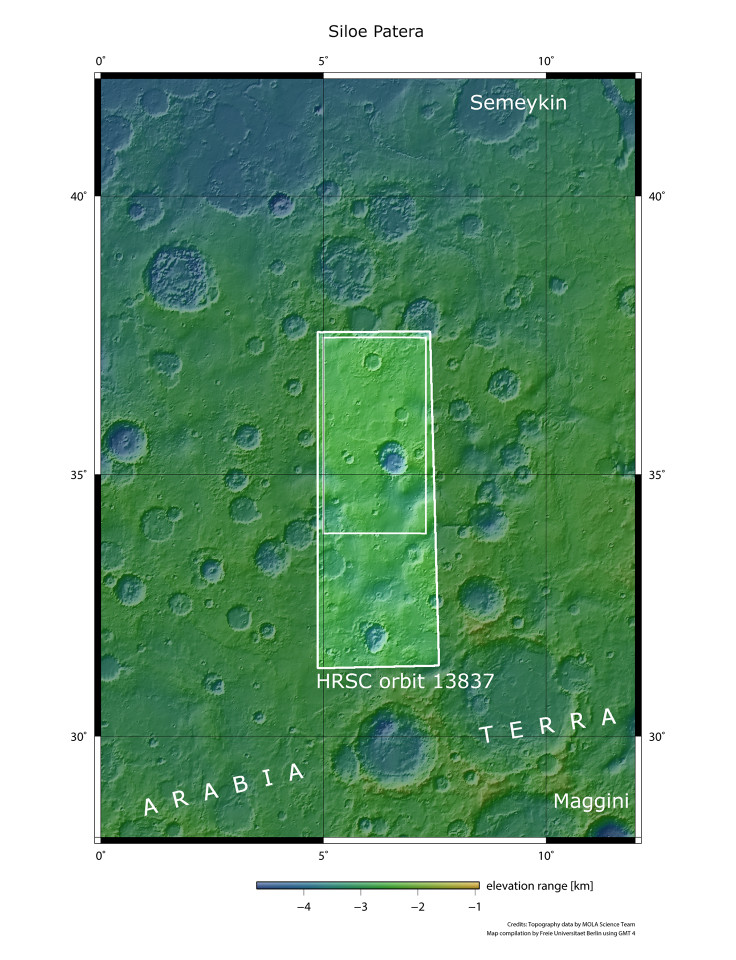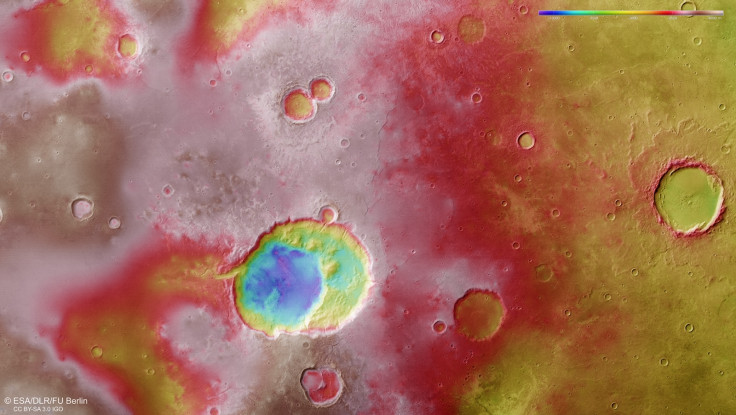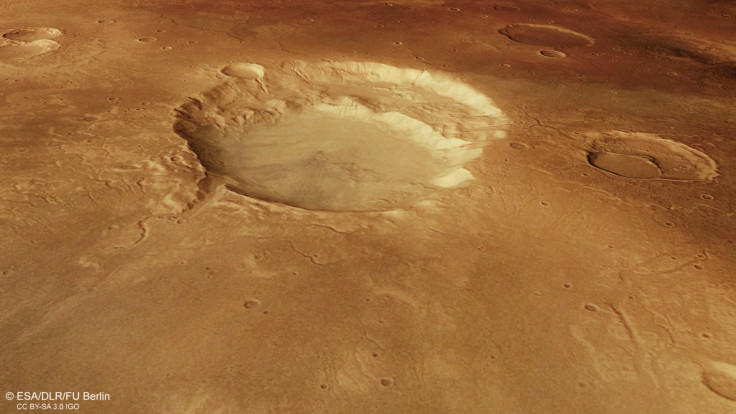Family of Yellowstones: Ancient remains of Martian supervolcanoes discovered by ESA [Photos]
A whole family of ancient Yellowstone-like supervolcanoes has been discovered on Mars by the European Space Agency's Mars Express mission.
Images from the mission appear to show impact craters, but scientists believe the largest of the features is in fact the remains of an ancient supervocano.
The images, taken last November, focus on the Siloe Patera feature in the Arabia Terra region of the Red Planet. This section includes two massive nested craters – the outer rim measures 40km by 30km and has a depth of 1,750m.

"Some scientists believe that Siloe Patera and a number of similar features in Arabia Terra are calderas, the collapsed centres of volcanoes. But not just any volcanoes: these are thought to be Martian supervolcanoes," ESA said in a statement.
Supervolcanoes occur when magma is trapped beneath the surface of the planet, leading to a massive build-up in pressure. On Earth, they are defined as a volcano that can produce at least 1,000 cubic kilometres of volcanic material in a single eruption – thousands of times bigger than normal eruptions and big enough to alter the planet's climate.
They erupt suddenly and explosively, so do not form as sloping mountains like normal volcanoes – meaning they are more difficult to identify.

ESA scientists note that a number of irregularly shaped craters found in the Arabia Terra regions "could represent a family of supervolcano calderas". They said the Siloe Patera caldera has two depressions with steep-sided walls and that this may even represent two different eruptive episodes.
Explaining why the Siloe Patera feature is unlikely to be an impact crater, the ESA said it does not have the structures you would expect – like a central peak, uplifted crater rims and ejecta blankets surrounding them.

"Arabia Terra is already known to comprise plains of fine-grained, layered sulphate and clay-bearing materials," it added. "The source of the material has been much debated, but lava and dust from eruptions could be the explanation.
"Without any doubt, more data and high-resolution coverage – and even in situ sampling – would be necessary to resolve this mystery. And since the gases released in supervolcano eruptions could have had significant effects on the Martian climate, this is a topic of great interest."
© Copyright IBTimes 2025. All rights reserved.






















